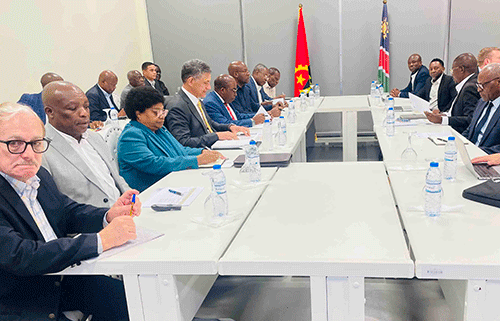Andreas Thomas
Namibia’s Minister of Mines and Energy Tom Alweendo met his Angolan counterpart on Monday to discuss progress made on the Baynes Binational Hydro-Power Project.
Alweendo and Joao Baptista Borges, the Angolan minister for energy and water, held a meeting at the Lauca Hydroelectric Dam in southern Angola.
During the meeting, the two ministers signed a resolution for the next step towards the joint implementation of the 881-megawatt Baynes hydroelectric dam. They also commended the progress made, which includes the completion of the key studies.
The remaining assessments are to be finished before the end of the year.
The Baynes project, on the Cunene River, has been in progress since 2008 when the feasibility study was commissioned and completed in 2014. A follow-up study was initiated in 2021, and completed in 2023.
According to a communiqué from the meeting, the two ministers approved the transformation of the Baynes project offices into a joint office to be located either in Luanda or Windhoek.
They also approved the development of an additional regulating dam, about 12 kilometres downstream from the main dam, with a capacity of 21 megawatts.
The lawyers of the two governments are expected to meet in Windhoek this month to finalise the legal review of the Baynes Binational Implementation Agreement.
Alweendo and Borges reiterated the importance of the power project for Angola, Namibia and the Southern African Development Community (SADC).
“Considering that Angola is not yet connected to the regional transmission network of SADC, it has become crucial that the Angola-Namibia Transmission Interconnection is expedited to ensure that Angola is connected to the regional power trading platform,” read the communiqué.
The two governments are expected to sign the Baynes Bilateral Agreement in July 2024. The energy cooperation agreement will define and formalise the implementation and financing models for the construction of the Baynes hydroelectric plant.
Borges pointed out that the public financing model was approved at the meeting, but it will still have to be submitted to the two Heads of State.
“If it is public funding, we will have a year to mobilise resources under favourable conditions to carry out this work as quickly as possible, given that 16 years have passed since the two states took the initiative to build the project,” the minister said.
Regarding the value of the project, the minister said the initially-agreed estimate of US$1.2 billion (around N$22.6 billion) remains unchanged, noting that the final cost will depend on the outcome of the public tender to hire the executing company.
The costs will be shared by the two countries, since each will benefit from around half of the capacity to be produced.
-Nampa


